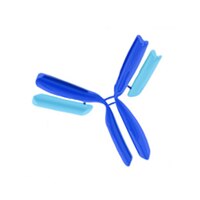AM80 Sigma-AldrichAnti-PAR (Ab-1) Mouse mAb (10H)
This Anti-PAR (Ab-1) Mouse mAb (10H) is validated for use in Immunoblotting, Immunocytochemistry for the detection of PAR (Ab-1).
More>> This Anti-PAR (Ab-1) Mouse mAb (10H) is validated for use in Immunoblotting, Immunocytochemistry for the detection of PAR (Ab-1). Less<<Sinónimos: Anti-Poly (ADP-Ribose)
Productos recomendados
Descripción
| Replacement Information |
|---|
Tabla espec. clave
| Species Reactivity | Host | Antibody Type |
|---|---|---|
| Dr, H, M, R | M | Monoclonal Antibody |
Precios y disponibilidad
| Número de referencia | Disponiblidad | Embalaje | Cant./Env. | Precio | Cantidad | |
|---|---|---|---|---|---|---|
| AM80-100UG |
|
Ampolla de plást. | 100 μg |
|
— |
| Description | |
|---|---|
| Overview | Recognizes poly(ADP)-ribose (PAR) in etopside-treated HL-60 cells. |
| Catalogue Number | AM80 |
| Brand Family | Calbiochem® |
| Synonyms | Anti-Poly (ADP-Ribose) |
| References | |
|---|---|
| References | Kawamitsu, H., et al. 1984. Biochemistry 23, 3771. |
| Product Information | |
|---|---|
| Form | Liquid |
| Formulation | In 100 mM NaCl, 50 mM HEPES, 1% BSA, pH 7.4. |
| Negative control | Normal mouse IgG |
| Positive control | Etoposide-treated HL-60 cells |
| Preservative | ≤0.1% sodium azide |
| Quality Level | MQ100 |
| Physicochemical Information |
|---|
| Dimensions |
|---|
| Materials Information |
|---|
| Toxicological Information |
|---|
| Safety Information according to GHS |
|---|
| Safety Information |
|---|
| Product Usage Statements |
|---|
| Packaging Information |
|---|
| Transport Information |
|---|
| Supplemental Information |
|---|
| Specifications |
|---|
| Global Trade Item Number | |
|---|---|
| Número de referencia | GTIN |
| AM80-100UG | 04055977228052 |
Documentation
Anti-PAR (Ab-1) Mouse mAb (10H) Ficha datos de seguridad (MSDS)
| Título |
|---|
Anti-PAR (Ab-1) Mouse mAb (10H) Certificados de análisis
| Cargo | Número de lote |
|---|---|
| AM80 |
Referencias bibliográficas
| Visión general referencias |
|---|
| Kawamitsu, H., et al. 1984. Biochemistry 23, 3771. |
Folleto
| Cargo |
|---|
| Caspases and other Apoptosis Related Tools Brochure |









